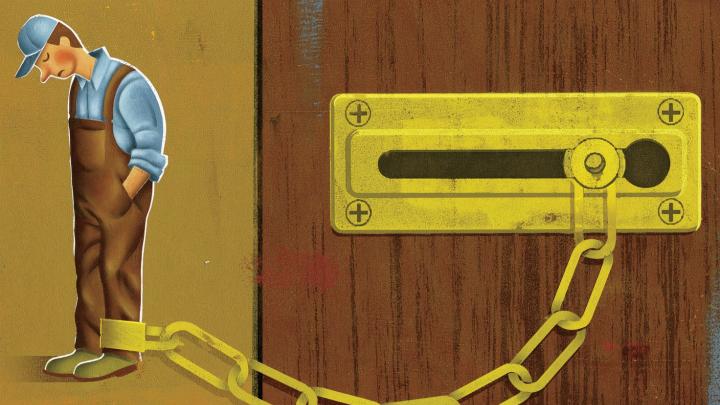For 100 years, the United States experienced a steady decline in income disparities between the richest and poorest states—with Mississippi and Alabama, for example, beginning to catch up to the more prosperous Connecticut and New York. But this equalizing trend ceased after 1980. Why? According to Daniel Shoag, assistant professor of public policy at the Kennedy School’s Taubman Center for State and Local Government, housing prices explain a large part of the puzzle. In a recent working paper coauthored with doctoral candidate in economics Peter Ganong, Shoag found that land-use restrictions in high-income locales have created barriers to entry for less-skilled workers, exacerbating inequality and threatening labor mobility—a key component of a healthy economy.
Economists have long viewed the leveling of U.S. regional incomes as a prime example of “convergence”—the principle that, in a market system, poor economies will grow faster than rich economies as capital moves in search of greater productivity gains. Yet this “capital mobility” theory doesn’t explain why the nation’s wealth gap stopped closing 30 years ago, leaving poor states still a sizable distance behind.
Shoag and Ganong posited that something more than mobile capital had to be involved to account for the end of the convergence effect. By digging into census records, they found that a pattern of directed labor migration (people moving to more productive places in search of higher earnings) could explain 40 percent to 75 percent of the century-long growth in economic equality among states. As more workers moved into higher-income areas, wages there began to fall, and human capital began to even out, while in the areas that were losing workers, wages began to rise, drawing more people into the workforce and increasing average incomes. “When this directed migration stopped,” Shoag explains, “income convergence also stopped.”
He and Ganong suspected that housing markets might explain why people stopped moving. What they found startled them. “Of course, rich places have always had higher housing prices than poor places,” Shoag notes, “but after 1980, the slope doubles.” The steep rise in housing costs in places like New York City, Boston, and San Francisco has had a direct impact on migration patterns and, hence, on convergence. Even though highly skilled workers in fields like finance or high tech have continued to move to these cities, low-skilled workers no longer have an incentive to do so because the higher cost of living now outweighs the likely income gains. Instead of poorer people moving to New York, pushing down wages there, while bidding up wages in poor areas, and skills equilibrating across places, “What you now get is skill sorting,” Shoag explains. “High-skilled people continue to move in, while poor people start moving out.”
What caused housing markets to change? The researchers created an index of regulation that could predict the flexibility of housing supply in different states in response to demand. Using an online database, they measured the number of times the phrase “land use” appeared in appellate court cases by state and year, and found that land-use restrictions became more common nationwide in the 1970s, but that not all states became strict regulators. The frequency of “land use” references in a state’s legal history proved a good predictor of whether a state would develop a high-regulation housing economy with constrained supply. By measuring regulation levels, Shoag and Ganong were able to test their hypothesis: they found that regulations limit housing supply by reducing the number of permits for new construction, and raising prices. This lowers net migration, and thus slows human-capital convergence and income convergence.
The authors have yet to investigate why increased regulation took hold in certain states, but they do know that land restrictions preceded the concentrations of wealth. “It is housing markets, not rich residents, that have caused segregation,” Shoag asserts. Their data also rule out geography (the limitations of available land to build on) as a decisive factor. “No doubt a lot of restrictions were put in for environmental reasons,” Shoag notes, “but what’s surprising is how much these local policies have shaped how things evolve.”
Recent efforts to explain the widening income gulf between elite urban areas and the rest of the country have tended to focus on the increased demand for highly skilled labor in places like Silicon Valley and Boston, where firms (and employees) in related industries benefit from clustering together. Shoag and Ganong have identified a more pernicious factor at play in this process. By stemming the flow of lower-income people into the most productive cities, housing restrictions have not only expanded class divisions, but also jeopardized a key stabilizing force in the U.S. economy. “If people no longer have the ability to migrate in response to regional economic shocks,” Shoag notes, “there will be more pressure on other adjustment mechanisms, like government interventions that target specific places or industries.”








